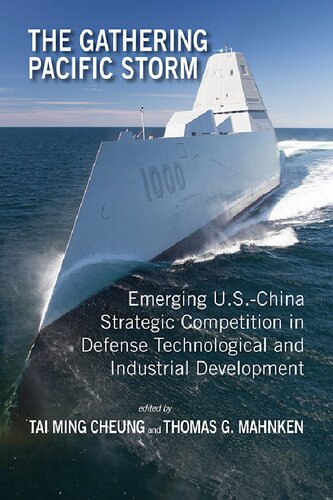

Most ebook files are in PDF format, so you can easily read them using various software such as Foxit Reader or directly on the Google Chrome browser.
Some ebook files are released by publishers in other formats such as .awz, .mobi, .epub, .fb2, etc. You may need to install specific software to read these formats on mobile/PC, such as Calibre.
Please read the tutorial at this link: https://ebookbell.com/faq
We offer FREE conversion to the popular formats you request; however, this may take some time. Therefore, right after payment, please email us, and we will try to provide the service as quickly as possible.
For some exceptional file formats or broken links (if any), please refrain from opening any disputes. Instead, email us first, and we will try to assist within a maximum of 6 hours.
EbookBell Team

4.0
36 reviews*This book is in the Rapid Communications in Conflict and Security (RCCS) Series (General Editor: Geoffrey R.H. Burn).
The United States has enjoyed overwhelming military technological superiority in the post-Cold War era, but China has begun to chip away at this dominance. As distrust and strategic rivalry becomes more prominent in US-China relations, this is helping to turn what had previously been parallel but separate military research and development efforts by both countries into a directly connected competition. This contest for leadership in defense technology and innovation promises to be a long-term and highly expensive endeavor for the United States and China
While there are some similarities between this emerging US–China defense strategic competition and the twentieth-century Cold War, there are also significant differences. The US–Soviet confrontation was primarily an ideological, geostrategic, and militarized rivalry between two countries and supporting alliances that were largely sealed from each other. This twenty-first century rivalry takes place against a backdrop of globalized interdependence, the blurring of military and civilian boundaries, and the growing prominence of geo-economic determinants.
US-China military technological competition lies at the heart of the growing strategic contest between the United States and China. This is largely because this technological rivalry straddles the geostrategic and geo-economic domains covering drivers ranging from industrial policy and foreign direct investment to weapons development programs and threat assessments. Examining the nature of the US-China defense technological competition requires a more comprehensive and nuanced understanding of the complex military, economic, innovation, and other drivers at play. Moreover, this technological race is still in the early stages of development and can be expected to grow larger, more complex, and more intense, so this book provides an invaluable
This